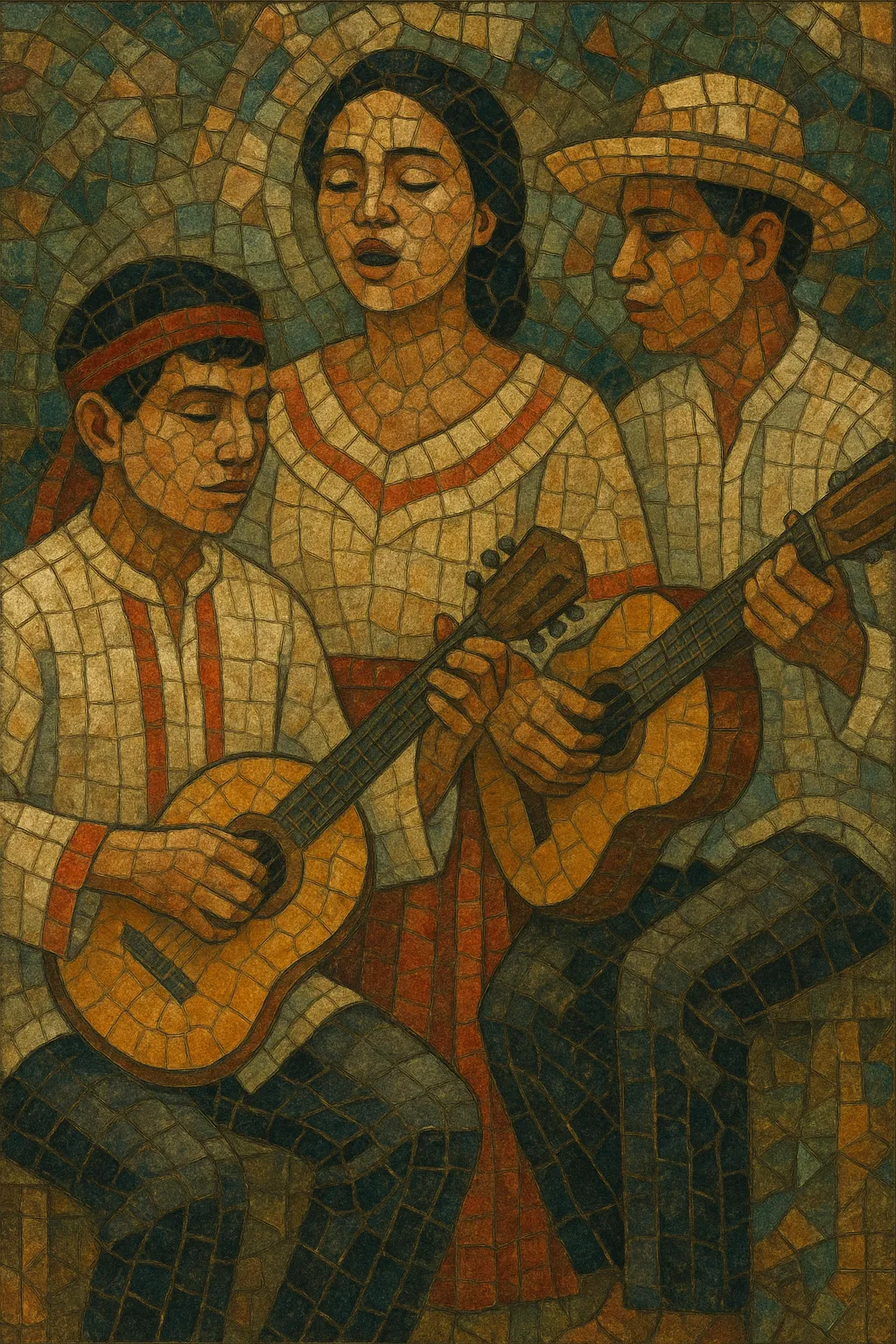
Ilocano music refers to the traditional and popular music of the Ilocano people of Northern Luzon in the Philippines. It encompasses love songs, work songs, children’s songs, ceremonial pieces, improvised sung poetry (dallot), and community dance tunes.
Shaped by centuries of contact with Spanish colonial culture, Ilocano repertoire blends indigenous vocal practices with guitar- and rondalla-accompanied forms. Courtship serenades (harana), strophic love ballads, and dance rhythms related to the fandango, waltz, and polka became core textures. Iconic folk songs such as Pamulinawen, Manang Biday, Bannatiran, and O Naraniag a Bulan are widely sung, arranged for choirs and rondallas, and taught in schools.
Today, Ilocano music lives simultaneously as a community tradition and as a source for contemporary arrangements in choirs, rondallas, and regional pop. The Ilocano language and the region’s poetic imagery—love, longing, nature, and migration—remain central to its sound and identity.
Ilocano music grew from the oral traditions of Ilocano-speaking communities in Northern Luzon. Before colonial contact, songs served social and ritual functions—courtship, work, storytelling, and mourning—using flexible melodies, responsorial singing, and strophic poetic forms.
During the Spanish period, string instruments (guitar, bandurria, laud) and ensemble practices (rondalla) took root. Serenade (harana) and love-song aesthetics overlapped with existing Ilocano verse, resulting in a local repertoire of strophic ballads and dance songs. Iberian dance meters—fandango (pandanggo), waltz, and polka—were localized and paired with Ilocano texts. Parallel to this, Catholic liturgical music and devotional practice shaped community choirs and hymn singing.
Ilocano songs were collected in songbooks, featured in local sarsuela (zarzuela) theatre, and taught in schools. The epic Biag ni Lam-ang circulated in sung and chanted forms, while popular pieces like Pamulinawen and Manang Biday became emblematic of Ilocano identity. Radio, band competitions, and church festivals helped canonize a common repertoire.
Rondallas and choirs across Ilocos Norte and Sur formalized performance practices, producing arrangements for multi-part voices and plucked strings. Migration within the Philippines and the diaspora extended Ilocano music to cities and overseas communities, where cassettes, CDs, and community concerts sustained the tradition.
School-based ensembles and prizewinning choirs popularize choral and rondalla settings of Ilocano songs. Contemporary arrangers and regional pop artists adapt Ilocano lyrics to OPM idioms, while cultural programs and festivals commission new works based on traditional melodies, poetic refrains (e.g., salidummay), and dallot performance.

